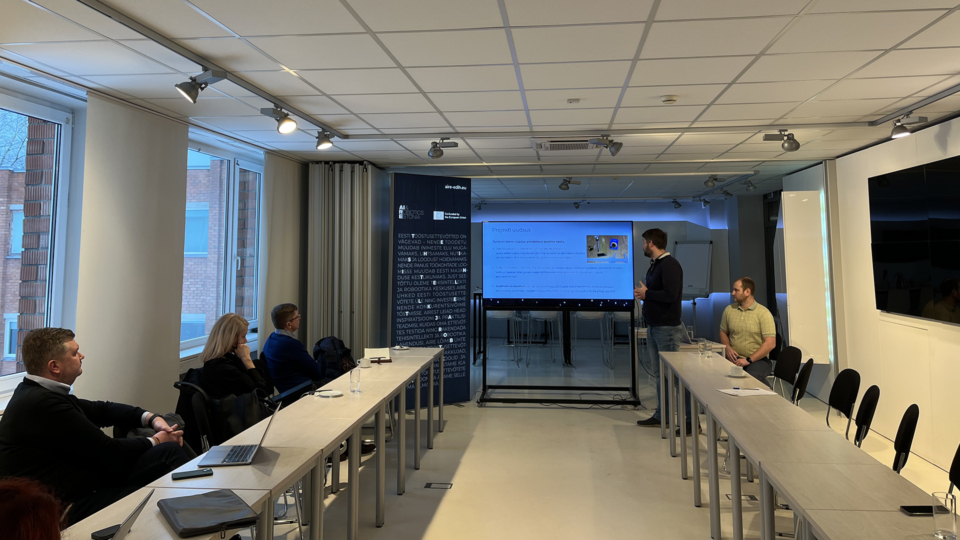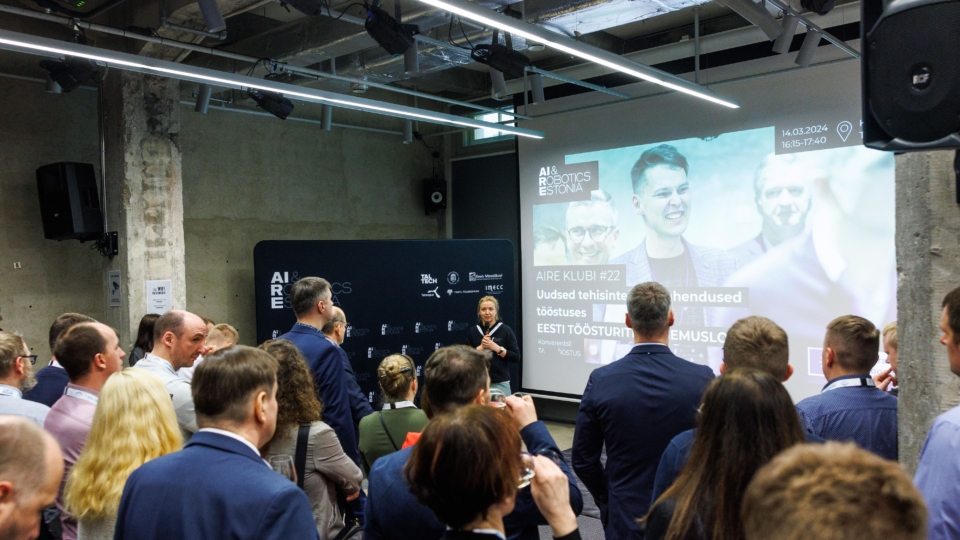Does the human step off the path of the robot or does the future lie in collaboration?
It is already known that artificial intelligence (AI) can create texts, music, and even films. Stories about how robots take jobs from humans have been around for years. Therefore, it is worth discussing what the relationship between robots and humans is today and in the future.
According to the International Federation of Robotics, in 2021 there were on average 141 industrial robots per 10,000 employees, with Asia leading the way. Estonia was ranked 34th, Finland 161st. The numbers are on an upward trend and Estonia’s lead over its neighbouring countries is increasing. Meeting the demand requires readiness to use cutting-edge technology to improve production processes. Robotics finds applications in every sector, providing advantages that humans alone cannot offer.
Why use robots?
In production processes, industrial robots increase the speed of production because they operate 24/7. Speed and reliability reduce production cycle time and thereby maximize workflow. The use of robots in solving repetitive tasks reduces the occurrence of errors and also reduces the risk of employee injuries, especially when production takes place under difficult conditions. In addition, operators have the opportunity to monitor the work process from a safe distance or even remotely via the web.
It is a common myth that automation takes away jobs from people. In reality, it hasn’t happened that way and the goal is actually to combine the work of humans and robots so that intermediate stages of the production process are simplified.
The use of robots allows employees to apply their knowledge and skills in other areas such as design, programming, or maintenance. The level of collaboration between humans and machines determines how applicable robotics is in the industry. In addition, the adoption of robots affects the pricing process because production becomes cheaper and the company can offer a more competitive price. If a company falls behind its competitors in robotization, there is a risk of losing out in price competition. The market always seeks the most favorable option, so a company that lags behind in innovation may disappear, and jobs will be lost.
Who benefits from robotization?
Robots can be applied in every industry, including energy, metallurgy, machinery, chemistry, food, and wood industries. Robots have been used in the car industry since 1962, when the first UNIMATE robot was installed in a General Motors plant in New Jersey.
To meet the changing demands of the market and consumers, robot automation must be continuously developed.
The precision and flexibility of robots ensure high quality in assembling complex components. Compared to other sectors, automation is still being selectively used in the food industry. However, this industry is developing rapidly and the possibilities for robot applications are becoming more diverse, such as picking and placing raw materials or processed food products, slicing, cutting, sorting, dispensing, etc.
The practical application of robots is familiar to Estonia, for example in the defense forces. We have all heard about the development of unmanned drones and self-driving vehicles. In agriculture, robotics allows saving time on sowing, harvesting, and weed control, thereby reducing production costs and enabling higher productivity.
The future of robots – Industry 4.0 – is rapidly advancing with the help of AI and 5G technologies and automation, focusing on efficiency and optimization while significantly reducing the possibility of errors. Automation is expected to grow exponentially in the coming years on a global scale, providing a rapid boost to the spread and development of robotics in the industry.
The next level of development is already underway – Industry 5.0 – where AI devices will be able to independently optimize the production process. Industry 5.0 enables fast customer service, product personalization, and optimization of human-robot cooperation, thus being proactive in the new industrial automation model and achieving technological advances. AI and machine learning are an integral part of business operations, helping to stay in touch with customer needs, which in turn ensures a competitive advantage.
The Artificial Intelligence and Robotics Center AIRE brings two parties together – researcher and industrial companies – to find solutions for increasing the efficiency of companies, which in turn supports economic growth.
Estonian University of Life Sciences in collaboration with AIRE is organizing a webinar on May 3rd about the situation of robotics in Estonia and worldwide, and will extensively cover the topic of industrial robotics with industry experts.
You are welcome to the webinar and gain knowledge to take your company to the next level!



